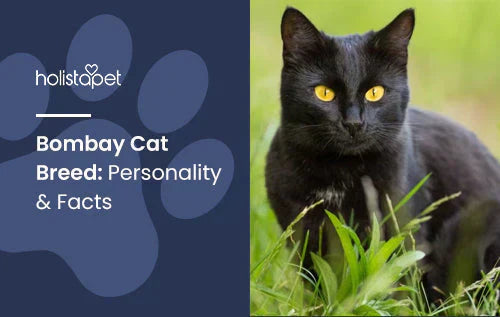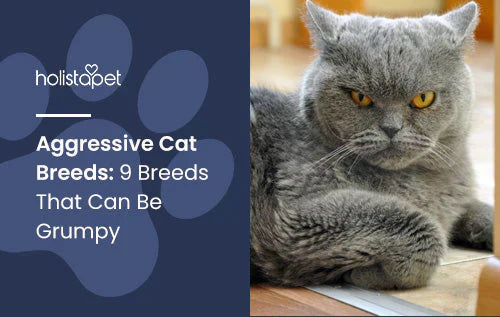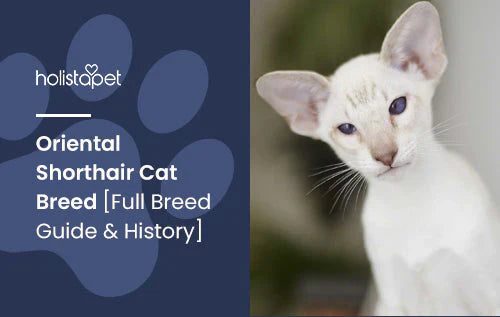The Bombay cat is a rare breed often referred to as a mini panther because of its glossy, black fur, intense golden eyes, and muscular frame. But once you get to know Bombay, you'll realize that they only look intimidating and are one of the most relaxed and friendly cats you'll ever meet! If you're looking for a loyal companion who loves to cuddle and walk on a leash, this might be the feline for you.
Breed Origin & History
Nikki Horner started creating Bombay cats in the 1950s when she had the idea to create a mini panther. It would have the body shape of the Burmese but with a shiny black coat and copper eyes. The breed of black cats she created was named Bombay after Bombay, India, where the black leopard is from.
So how did she do it? Nikki Horner first found an American Shorthair with the fur and eyes she desired. Then, she crossed him with one of her female Burmese. It took a lot of trial and error, but it finally produced the cat she envisioned. The Cat Fanciers' Association registered the Bombay in 1976. Since then, the Bombay has continued to be bred, usually with a sable Burmese. The Bombay is still pretty rare in the United Kingdom and North America.
Breed Personality
The Bombay has the laid-back nature of the American Shorthair and the curious and playful bombay cat characteristics of the Burmese. This breed is both chatty and friendly. They enjoy human company, whether it be playing games or cuddling with you under the covers. They're happy as long as they are the center of your affectionate attention.
This is a highly intelligent and curious cat that can be found exploring the house when they're bored. This could mean a mini panther prowling your countertops or digging in your cabinets if you're not being attentive enough. Keep them occupied with a puzzle game or an interactive toy. Despite their wildcat looks, the cat is a pretty calm cat that quickly adapts. They are OK with prominent families — including children and dogs, not a break! — or chilling in a small apartment. They even enjoy being on a leash if trained as a bombay cat kitten.

Breed Characteristics (Physical)
Bombay cats appear friendly and alert. What stands out the most is their sleek, black coat. Jet black and glossy, the coat makes the Bombay's lean, muscular body seem even more impressive. The CFA describes them as cats with an "unmistakable look all their own."
Size
Bombays are considered medium-sized cats, well-balanced and muscular. Their straight tail is also medium length, and their overall build shouldn't appear compact. Bombays weigh between eight and 15 pounds, with the female cats being smaller.
Head
The mini panther has a medium-sized head that's round with no sharp angles or edges. Its muzzle is also rounded, and its circular eyes are set wide apart. Its ears are also set wide apart, broad at the base, and then slightly rounded at the top.
Eye Color
The Bombay has eyes ranging from gold to copper. The CFA notes that the brighter and more brilliant they are, the better. They should also have depth, giving them an alert and curious look.
Legs & Paws
The Bombay's legs are in proportion to its torso, rounded head, and tail. It is medium-length and muscular. Its paws, much like a panther's, are round. It has five toes in front and four in back.

Coat
What makes a Bombay unique is its glossy black coat and sleek, satin-like short coat. It's shimmering and close-lying to the cat's muscular body like a panther. The CFA describes their dark coat as "black to the roots." Bombay cats cannot have any white or any other coat color. Their nose and paw pads are also black.
Breed Care
The Bombay cat is a bit like a panther in personality, too. While they are pretty friendly, they sometimes need their own space or territory to feel secure. Try giving them a pretty tall cat tree where they can reign supreme over the humans and other cats in your home. They might also decide to make your shoulder their new domain.
Their short, sleek coat isn't too much work. Once a week, please give it a few strokes with your hand or a brush. You can also use chamois to rub them down, removing dead fur to avoid hairballs and excess shedding while ensuring their coat stays shiny. Make it another weekly grooming habit to brush their teeth, remove discharge from their eyes, and check their ears for buildup.
Health Problems
The Bombay cat can live up to 20 years on average, but that's only if they are given a proper diet and brought to the vet regularly. Scheduled veterinary check-ups will allow you to keep your pet well up with vaccinations and manage diseases before they get out of hand. Overall, Bombay is considered a healthy breed, but there are a few things to look out for.
A common health issue with this cat breed is sinus problems and runny noses. A cat with sinus problems will often swipe at their face and have a loss of appetite. You may notice nasal discharge, sneezing, and labored breathing. You should get your Bombay fixed at five to nine months old since this cat breed can reach sexual maturity as early as five months. The craniofacial defect is a common condition in Burmese cats. This is a deformed head that leads to kittens being euthanized.
Children & Other Pets
Bombay is an adaptable cat that gets along with the whole family—including children and dogs! Always supervise your Bombay when it's playing with your dog, other pets, or kids to ensure that everyone is getting along and nobody is roughhousing. While they're usually pretty easy-going with new humans, you may notice that your Bombay is not too keen on new cats in the home.

Bombays can be a little territorial with their house and family, although they're not too aggressive about it — they want to be the boss. Please give them a tall cat tree to let your regal black leopard reign your home from above.
Nutrition
Like all other cat breeds, Bombay should be fed a commercial cat food containing a named protein source (think chicken, lamb, or salmon) and the proper amount of taurine. This is an essential amino acid that keeps your Bombay active and their coat shiny. This cat breed is known to develop slower than most other breeds of cats. They may not reach full maturity until they are two years old. Make sure they are being provided the proper nutrients as a kitten to support their growth.
Most cat food brands will show you the proper amount to feed your cat daily based on their weight, age, and activity level. Cat treats should never make up more than 10% of a cat's daily caloric intake.
Final Thoughts - Bombay Cat Breed
Bombay's have a few nicknames. The author of The Ultimate Guide to Cat Breeds, Louisa Somerville, called Bombay cats "patent-leather kids with new-penny eyes." The Bombay is also called the "Velcro cat" because of its desire for attention. And we don't just mean the Bombay will want to hang out in the same room as you. Bombay cat price depends on the breeder. This cat wants to be in the same bed, usually under the covers! They're often found curled inside piles of laundry or under blankets — and they especially love it if you're in the thick of it with them.
Breeders from the US and Europe have different approaches to creating the perfect Bombay cat. British breeders paired Burmese cats with black domestic shorthairs to get their Bombays. While similar, the British Bombay cat has green eyes instead of copper or gold. Adopting a Bombay from a registered breeder costs around $600 to $800. But it's worth it if you want a mini panther prowling your house, playing fetch, and cuddling with you every night. Find more about Holistapet here.
Read Next: MAINE COON CAT: THE FLUFFY, LARGE & LOVABLE FELINE GUIDE

 CBD Oil for Cats - Fast Acting
CBD Oil for Cats - Fast Acting
 CBD Cat Treats - Easy Dose
CBD Cat Treats - Easy Dose
 CBD Calming Chews for Cats - Highly Rated
CBD Calming Chews for Cats - Highly Rated
 CBG Oil for Dogs and Cats - Loved by Thousands
CBG Oil for Dogs and Cats - Loved by Thousands





Leave a comment
All comments are moderated before being published.
This site is protected by hCaptcha and the hCaptcha Privacy Policy and Terms of Service apply.